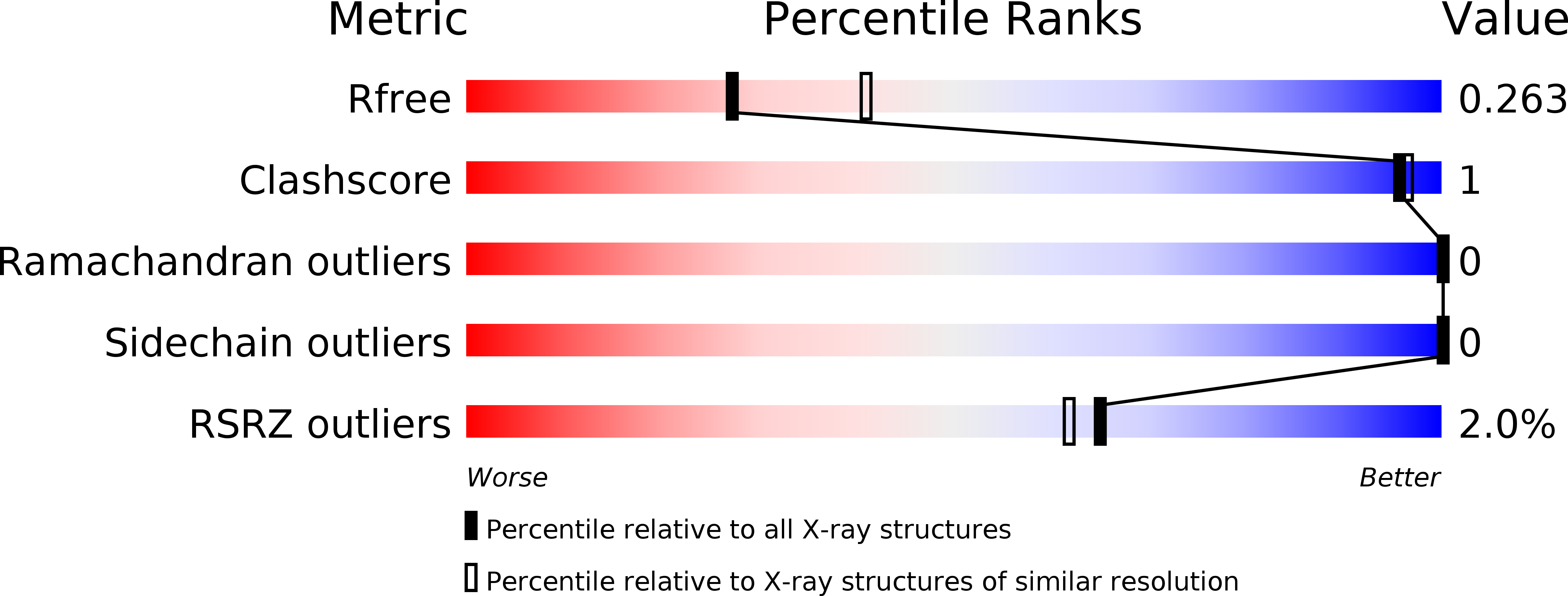
Deposition Date
2014-09-05
Release Date
2015-06-24
Last Version Date
2024-10-16
Entry Detail
PDB ID:
4WCO
Keywords:
Title:
Crystal structure of extracellular domain of human lectin-like transcript 1 (LLT1), the ligand for natural killer receptor-P1A
Biological Source:
Source Organism:
Homo sapiens (Taxon ID: 9606)
Host Organism:
Method Details:
Experimental Method:
Resolution:
2.46 Å
R-Value Free:
0.25
R-Value Work:
0.21
R-Value Observed:
0.22
Space Group:
P 21 21 2


